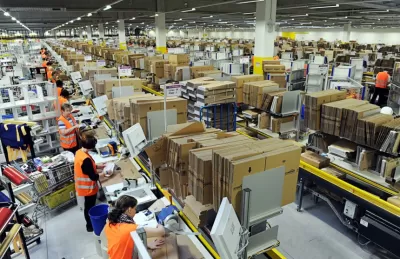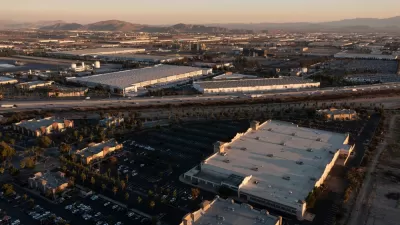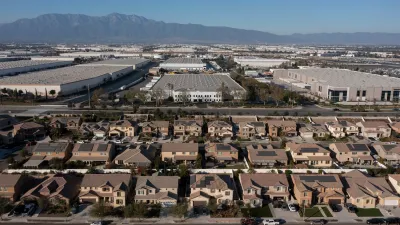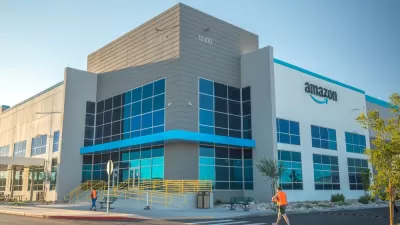Often located in low-income communities of color, Amazon's warehouses contribute to public health impacts like poor air quality, noise pollution, and traffic congestion.

An investigation from Consumer Reports uncovered that most neighborhoods where Amazon builds its warehouses are home to more people of color and low-income households than other neighborhoods in the same areas—and that this choice has powerful consequences for local residents. According to an article by Kaveh Waddell, "Residents near the new warehouses say they face increased air pollution from trucks and vans, more dangerous streets for kids walking or biking, and other quality-of-life issues, such as clogged traffic and near-constant noise."
According to the investigation's findings, "the neighborhoods where Amazon opens warehouses often have a greater proportion of people of color than 70 percent or more of the surrounding metro area’s neighborhoods." Meanwhile, the company's retail stores, such as Whole Foods, are more often located in "wealthier, whiter neighborhoods."
The article details the health impacts of truck traffic and pollution and the disproportionate influence of Amazon in the growing delivery industry. In many cases, the company receives tax incentives to build warehouses, effectively receiving subsidies from the very communities their operations harm.
In response to concerns about impacts on neighborhoods and labor issues, some cities in Southern California's Inland Empire have passed moratoriums on new warehouses, and the state's attorney general sued to stop the construction of a (non-Amazon) warehouse project. And while Amazon has promised to electrify its delivery truck fleet, that change would not mitigate the effects of heavy trucks lumbering down residential streets and, in some cases, causing physical damage to adjacent homes.
As Amazon's need for more warehouses continues to grow, the company is now buying real estate rather than leasing it to capture more of the value created by their properties.
FULL STORY: When Amazon Expands, These Communities Pay the Price

Planetizen Federal Action Tracker
A weekly monitor of how Trump’s orders and actions are impacting planners and planning in America.

Maui's Vacation Rental Debate Turns Ugly
Verbal attacks, misinformation campaigns and fistfights plague a high-stakes debate to convert thousands of vacation rentals into long-term housing.

Restaurant Patios Were a Pandemic Win — Why Were They so Hard to Keep?
Social distancing requirements and changes in travel patterns prompted cities to pilot new uses for street and sidewalk space. Then it got complicated.

In California Battle of Housing vs. Environment, Housing Just Won
A new state law significantly limits the power of CEQA, an environmental review law that served as a powerful tool for blocking new development.

Boulder Eliminates Parking Minimums Citywide
Officials estimate the cost of building a single underground parking space at up to $100,000.

Orange County, Florida Adopts Largest US “Sprawl Repair” Code
The ‘Orange Code’ seeks to rectify decades of sprawl-inducing, car-oriented development.
Urban Design for Planners 1: Software Tools
This six-course series explores essential urban design concepts using open source software and equips planners with the tools they need to participate fully in the urban design process.
Planning for Universal Design
Learn the tools for implementing Universal Design in planning regulations.
Heyer Gruel & Associates PA
JM Goldson LLC
Custer County Colorado
City of Camden Redevelopment Agency
City of Astoria
Transportation Research & Education Center (TREC) at Portland State University
Jefferson Parish Government
Camden Redevelopment Agency
City of Claremont





























